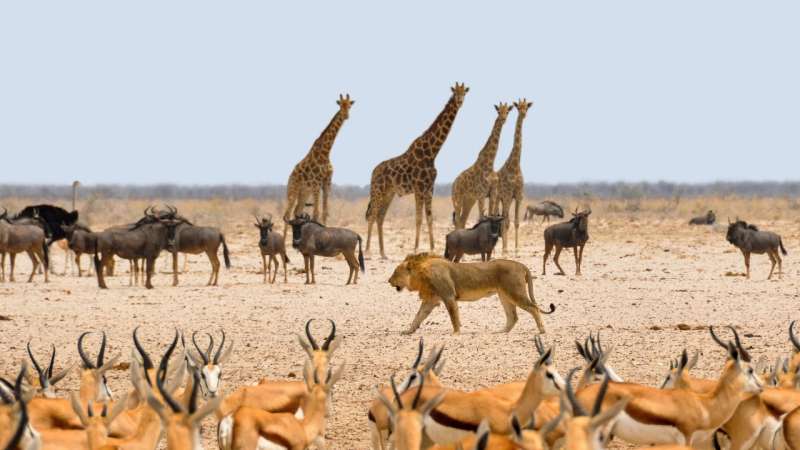Dry landscapes can increase disease transmission

In water-limited landscapes sick animals can have increased contact with healthy individuals, which can facilitate disease transmission. Scientists from the German Leibniz Institute for Zoo and Wildlife Research (Leibniz-IZW) present these findings in the British Ecological Society journal Functional Ecology.
Sick individuals often behave differently. For example, they usually sleep more and eat less. Accordingly, one could expect that sick individuals have less contact with others than healthy individuals. Reduced contact should in turn slow down the spread of pathogens among individuals. "We studied whether the opposite effect is also possible, i.e. whether sick individuals may have more contact with others, which could speed up the spread of pathogens," explains Mathias Franz, research scientist at the Leibniz-IZW. "For this purpose we simulated a population of virtual animals living in dry landscapes in which they regularly visit a single waterhole for drinking. We observed that sick individuals, who we assumed to be more lethargic, stayed closer to the waterhole. Because healthy individuals also visit the waterhole regularly, we found that lethargy leads to an increase in encounters between sick and healthy individuals." The results of the study show that the resulting increase in contact can therefore speed up the spread of pathogens.
The study shows that dry landscapes can change how sickness influences host behaviour in unexpected ways: instead of reducing contact and the spread of pathogens, sickness behaviour might lead to an increase in contact and pathogen transmission. Based on this finding, the prediction is that the availability of drinking water can have far-reaching implications for the spread and evolution of pathogens. Specifically, the scientists hypothesize that the effect of sickness on behaviour is most pronounced in animals that are very dependent on regular access to limited drinking water—or any other limited resource. This is for example the case for African buffaloes, which harbour important infectious diseases such as bovine tuberculosis. In conclusion, understanding how sickness affects behaviour could help predicting and controlling disease transmission within wildlife and between wildlife and domestic animals.
More information: Mathias Franz et al. Sickness-induced lethargy can increase host contact rates and pathogen spread in water-limited landscapes, Functional Ecology (2018). DOI: 10.1111/1365-2435.13149
Journal information: Functional Ecology
Provided by Forschungsverbund Berlin e.V. (FVB)



















